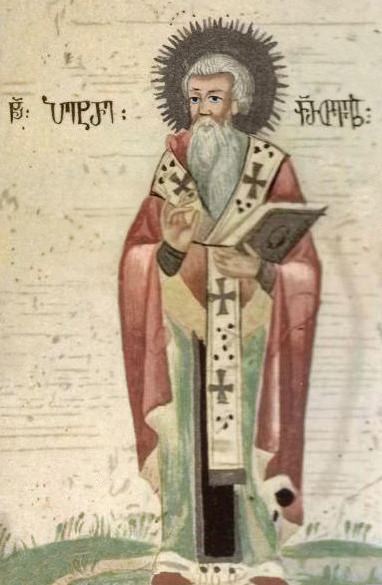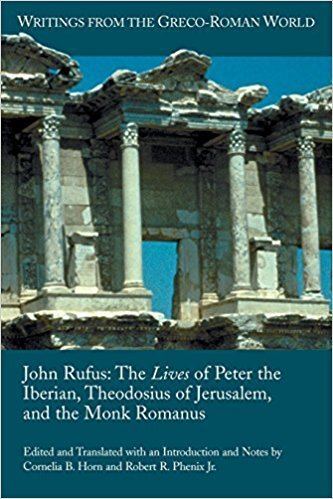Name Peter Iberian Role Philosopher | ||
 | ||
Peter the Iberian (Georgian: პეტრე იბერი, translit.: p'et're iberi) (c. 417-491) was a Georgian royal prince, theologian and philosopher who was a prominent figure in early Christianity and one of the founders of the Christian neoplatonism. Some have claimed that he is the author of the works written under the pen name Pseudo-Dionysius the Areopagite.
Contents

His accomplishments include founding the first Georgian monastery in Bethlehem and becoming the bishop of Majuma near Gaza. The oldest Georgian Bir el Qutt inscriptions mention Peter with his father.

Life
He was born into the royal Chosroid dynasty of the Kings of Iberia (Eastern Georgia) and was initially named Murvan (alternatively, Nabarnugios), Prince of Iberia (Kartli). His father, King Bosmarios of Iberia, invited noted philosopher Mithradates from Lazica to take part in Murvan’s education. For a time, the child was kept hidden so as not to be delivered as a hostage to the Persians. In 423, at the age of about five, the prince was sent as a political hostage to Constantinople to ensure the loyalty of Iberia to the Byzantines rather than to the Persians. Here he received a brilliant education under a personal patronage of the Roman empress Aelia Eudocia, wife of Theodosius II.
According to his biographer, John Rufus, Peter refused to write to or receive letters from home lest it undermine his ascetic discipline. When he was about twenty, the young prince, together with his mentor Mithradates, left the palace and escaped to make a pilgrimage to Palestine, where he became a monk at Jerusalem under the name of Peter. In 430, he founded his own monastery at Bethlehem (later known as the Georgian Monastery of Bethlehem). In 445, he was ordained as a priest. Accompanied by Mithradates (now called John), he traveled across several countries of the Near East and finally settled in Majuma near Gaza.
In 452, he served as bishop of Majuma for six months before some Christians were banished by the decree of the local ruler. Peter escaped to Egypt but returned to Palestine a decade later. He gained numerous followers and disciples. According to the medieval sources, he was an author of several famous religious works. However, none of them survived to be written under the name of Peter.
He died at Yavneh-Yam, port of ancient Iamnia, in 491 and was buried in his monastery near Gaza.
Various eastern Churches think that he may have deviated from the Chalcedonian doctrine.
Peter’s Vita was written by his disciple, John Rufus (John of Beth Rufina), later his successor as bishop of Maiuma.
